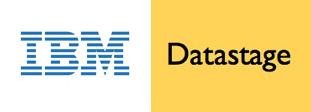4가지 추천하는 데이터 정리 도구 | 웹 스크래핑 툴 | ScrapeStorm
개요:This article will introduce 4 recommended data cleaning tools. ScrapeStorm무료 다운로드
Data is the foundation of information, and high-quality data is the basic condition to help various data analysis to proceed in an orderly manner.
Faced with a large amount of data, people often complain about the abundance of data and insufficient information. There are two reasons for this situation: one is the lack of effective data analysis technology, and the other is the low quality of the data. The latter is the most common cause of insufficient information.
The main reason for low data quality is the existence of dirty data in the database and data input errors. Different representation methods and inconsistencies between data caused by data from different sources are the cause of dirty data. Therefore, before data analysis, we should first perform data cleaning.
Data cleaning is a process of collecting and analyzing data, re-examining and verifying data. Its purpose is to deal with different types of data, such as missing, abnormal, duplicate and illegal, to ensure the accuracy, completeness, consistency, validity and uniqueness of the data.
Let’s take a look at five commonly used data cleaning tools.
1. IBM InfoSphere DataStage

IBM InfoSphere DataStage is an ETL tool and part of the IBM Information Platforms Solutions suite and IBM InfoSphere. It uses a graphical notation to construct data integration solutions and is available in various versions such as the Server Edition, the Enterprise Edition, and the MVS Edition. It uses a client-server architecture. The servers can be deployed in both Unix as well as Windows.
It is a powerful data integration tool, frequently used in Data Warehousing projects to prepare the data for the generation of reports.
2. PyCharm

Pycharm is a PythonIDE integrated development environment. It has a set of tools that can help users improve efficiency when using Python language development, such as debugging, syntax highlights, project management, code jumps, smart prompts, automatic completion, unit testing, version control, etc. .
3. Excel

Excel is the main analysis tool for many data-related practitioners. It can handle all kinds of data. Statistical analysis and auxiliary decision-making operations. If performance and data volume are not considered, most data-related processing can be handled.
4. Python

Python language is concise, easy to read, and extensible. It is an object-oriented dynamic language. It was originally designed to write automated scripts. It is increasingly used to develop independent large-scale projects, because the version is constantly updated and new language features are also increasing.
면책 성명: 이 글은 우리 사용자에 의해 기여되었습니다. 침해가 발생한 경우 즉시 제거하도록 조언해 주세요.